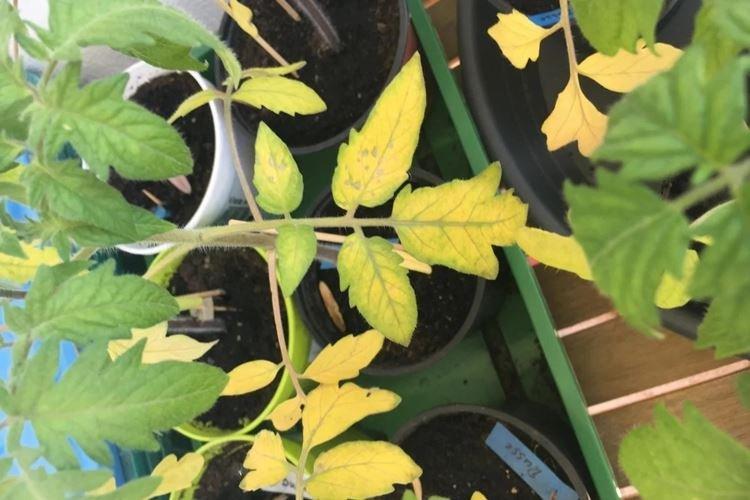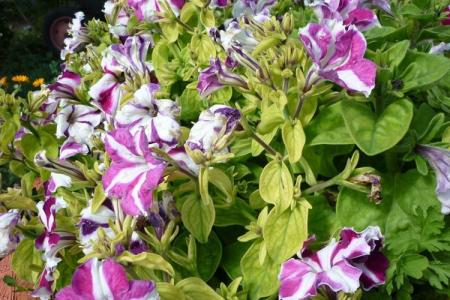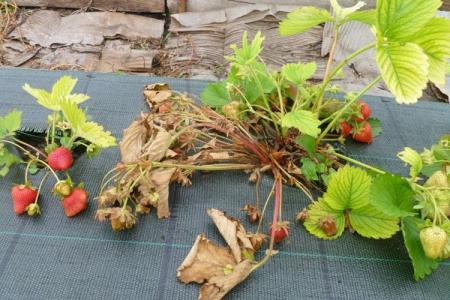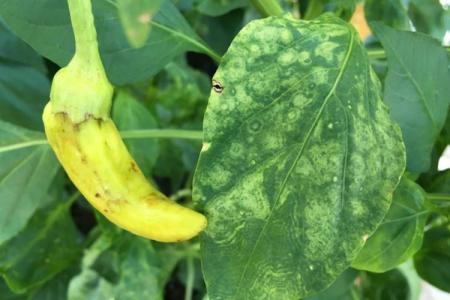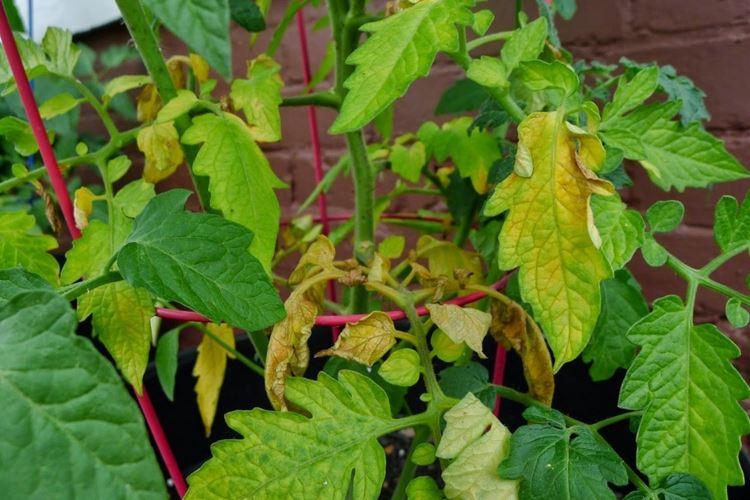
When your favorite seedlings are sick, you want to immediately find out the reasons in order to save the crop. Maybe something is wrong with leaving, there is not enough fertilizer, the garden was attacked by pests or the tomatoes are sick? We have specially analyzed the possible options in detail. We share the reasons why the leaves of tomatoes turn yellow!
Main reasons
The most common reasons are obvious and commonplace: lack of sun, water or nutrients. Such problems are fairly easy to correct, and the seedlings will bounce back on their own. But at the same time, yellowness can be an alarming symptom of various diseases or fungus. More radical actions are already needed here.
Sometimes yellowing is a natural process that indicates the adaptation of the plant to the conditions around it. It can indicate problems with the absorption and transfer of minerals. In any case, it is better to wait a couple of days first - perhaps the problem will disappear on its own. Most importantly, watch out for the absence of other symptoms!
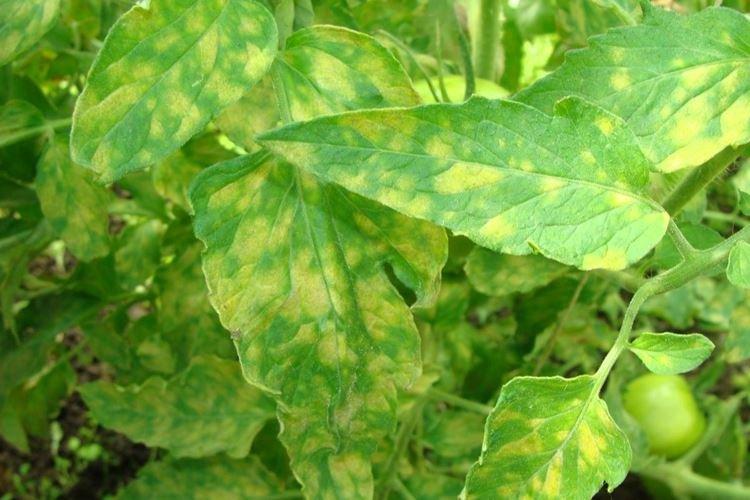
The lower leaves of tomatoes turn yellow
For adult plants, yellowness below is a normal biological course of events, because they develop and age. Tomatoes dump "ballast" in order to concentrate resources on the development of young shoots and the formation of fruits. In the absence of any other symptoms and in good condition, nothing needs to be done.
Sometimes the lower leaves wither immediately after transplanting - this is a natural reaction of the shoots to stress. You need to maintain the health of the top, and the seedlings will cope with the rest on their own. When the leaves from below completely die off, just remove them as soon as possible so as not to create favorable conditions for diseases.
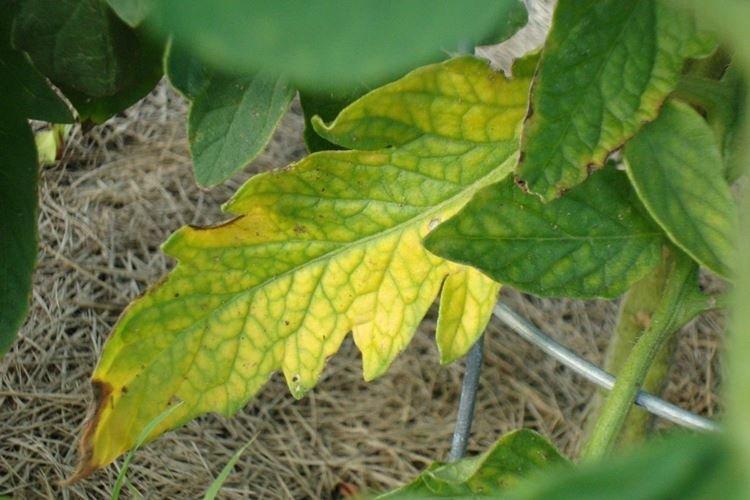
The top leaves of tomatoes turn yellow
When the young shoots from above turned yellow first, they lack nutrients. Useful minerals simply do not reach them, so it's time to feed or sprinkle.
- If yellow spots appear along the veins or in the middle of the plates, there is little iron. After feeding with 1% chelate or vitriol, the problem will disappear in a couple of days. Do not use only salts, because they impair the absorption of phosphorus;
- With a calcium deficiency, the leaves begin to change from the very tips. The second indirect sign is if flowers begin to fly around. And when the tomatoes are already bearing fruit, dark spots appear on them, which quickly increase;
- When the bases of the leaves are deformed, and not as usual - the edges, and then change color - a weak solution of boric acid is needed. Lack of boron in the future can lead to the death of the ovaries and a deterioration in the taste of the crop;
- Red streaks on yellow plates and weak lignified shoots are symptoms of sulfur deficiency. In this case, magnesium sulfate is best;
- Fading and yellowing irregular spots along the plates are a reason to carry out processing with potassium permanganate. It is also a good antiseptic that prevents the development of fungal diseases. Change the concentration from 1 to 3 g, depending on the intensity of the problem.
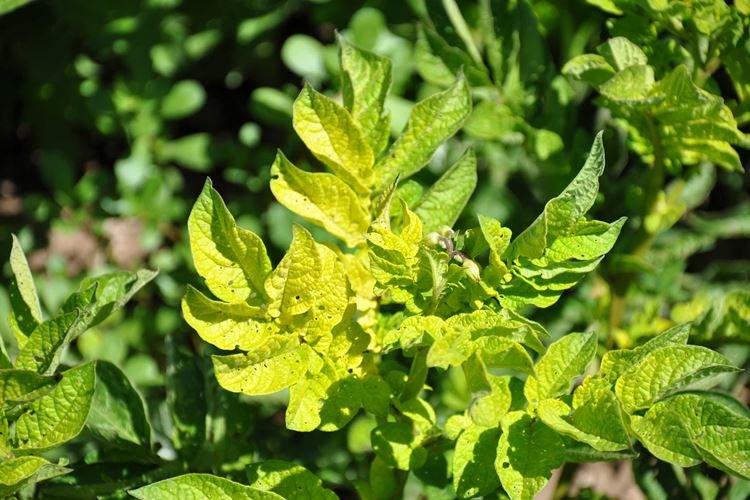
Tomato leaves turn yellow and curl
Deformation and yellowing of leaves is a dangerous sign that usually indicates more serious problems. At best, this is uneven growth due to a lack of lighting or a severe fertilizer shortage. But often the reason is that ticks or aphids are hiding on the back of the plates. In the worst case, the parasites eat the roots.
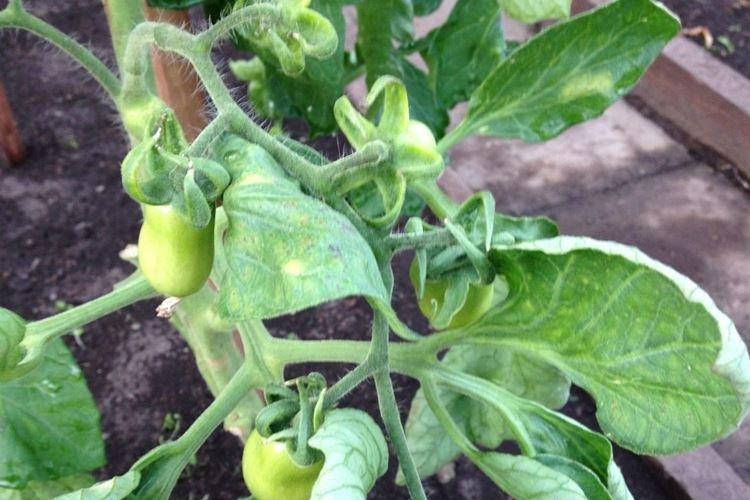
Tomato leaves turn yellow and wither
The yellowness and wilting of the leaves most likely indicate an excess of moisture at the same time as a low temperature. Reduce watering, use warm water, and build a shelter. Check with the feeding schedule to see if the seedlings have enough nitrogen and other nutrients. Observe that wilting begins gradually and from the edges, otherwise this is a likely symptom of a fungus.
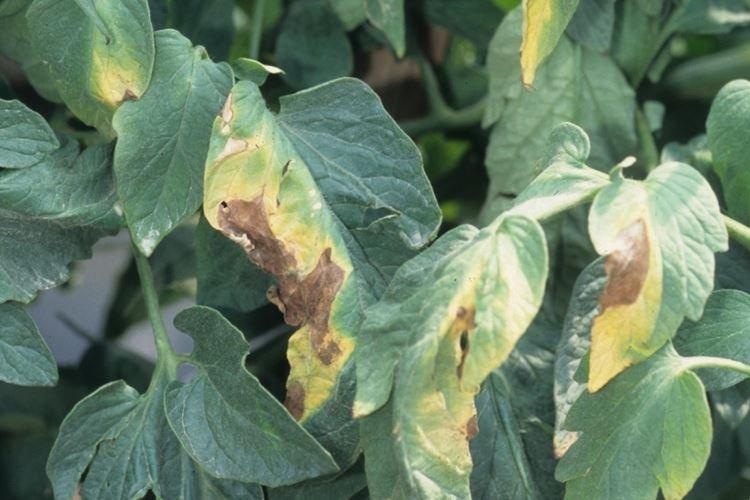
Tomato leaves turn yellow after planting
Planting is always stressful for seedlings, and it affects health and appearance. Adaptation is a normal feature of the life cycle that is not unique to plants. But if the situation has not stabilized by itself in the near future, the reasons may lie deeper.
- A fungus or pest larvae could remain in the soil, which now eat young seedlings;
- When replanting, it is especially easy to damage the delicate root system. If the damage is minor, the plants will bounce back on their own;
- Sprouts react the fastest to improper watering, so keep an eye on the moisture level of the substrate;
- If it turns out that it is still too cold outside, the tender young foliage of the seedlings will turn yellow. Wait for stable warming, because the rush to transplant is fraught with damage to the crop. It could even be June in the northern regions.
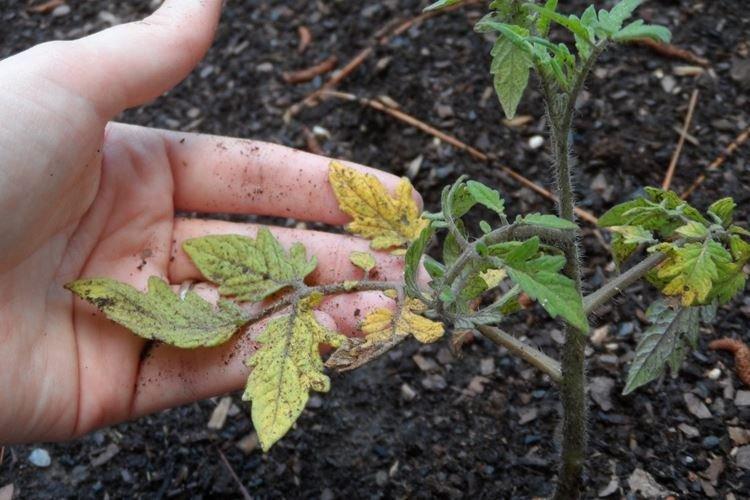
Tomato leaves turn yellow in the open field
Seedlings in an open area are much more exposed to any external influences. These are winds, rains, scorching sun, insects and pests - which means that it is important to quickly determine the source of the problem.
- During drought and heat, the leaves of tomatoes dry from lack of moisture, so increase the frequency of watering;
- If it is cold outside and it rains for a long time, it is likely that there is too much moisture, so come up with a shelter;
- Tomatoes often turn yellow due to unexpected frosts, because this is their natural reaction to hypothermia;
- Leaves will turn yellow if the rhizome is accidentally damaged during excavation. The plant then focuses on recovery and sends less nutrients to the ground. This is a normal process, so just watch;
- When the soil lacks nitrogen and potassium, the leaves grow weaker, become smaller, deformed and turn yellow. This is a sure signal to carry out unscheduled feeding;
- Tomatoes get sick like any other plants. Late blight or mosaic spots are usually irregular, haphazard and chaotic. They spread rapidly, change color and texture, and can swell or dry out. Not all diseases are cured, and you need to immediately isolate the damaged bushes, without waiting for spread.
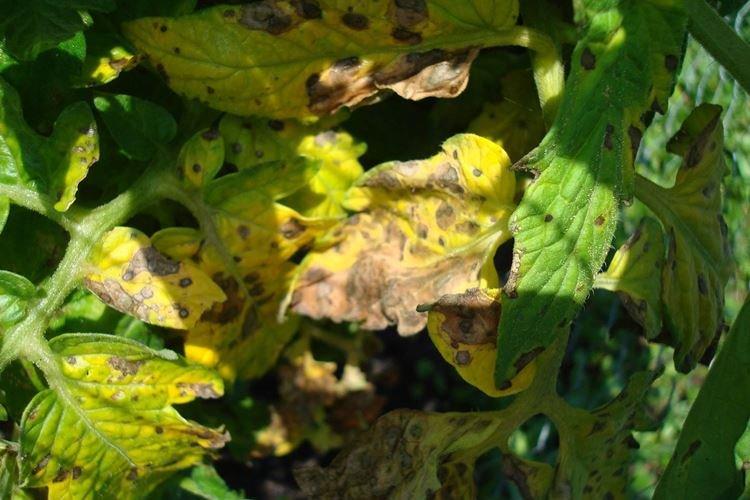
Tomato leaves turn yellow in the greenhouse
It seems that already in the greenhouse there are exactly ideal conditions for the tomato seedlings to feel good. However, plants are a living organism, so there is no universal panacea for all ills.
- If the leaves of tomatoes not only turn yellow, but also rot, then the humidity in the greenhouse is too high. Bring it down to about 65% and make sure it's not cold. Be sure to install and track thermometers and sensors;
- For seedlings, too rare and too frequent watering is equally destructive. If the yellow leaves dry out, they have little moisture, and if they soften, you need to dry the soil and reduce watering;
- Always use nitrogen during intensive greening. Add it little by little, but in several passes, so as not to burn the roots and spoil the soil. Leaves that have enough strength and minerals will quickly regain their color. We recommend combining nitrogen with ash - it is rich in potassium and prevents acidification;
- If everything is in order with leaving, but the leaves of the tomatoes still turn yellow, the root system may be damaged. These are not necessarily pests: maybe someone accidentally damaged the root with a shovel. If the problem is purely mechanical, the plants will recover on their own when they regain strength;
- In case of diseases, other symptoms appear: yellow spots turn into dark ones, and plates and shoots are bent. The development of viruses is aggravated by heat, an excess of nitrogen and moisture, and improper pinching.
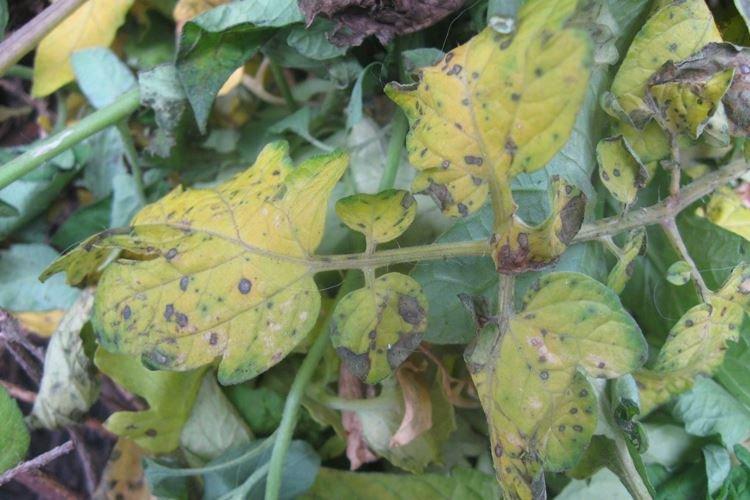
Leaves of tomato seedlings turn yellow on the balcony
Young tomato seedlings are very vulnerable to all external factors, so even on the balcony it is difficult to guarantee ideal conditions. And then there are some specific problems.
- The situation with a lack or excess of moisture remains the same, so follow the state of the substrate, and not the theoretical schedule;
- For the development of young seedlings, they need warmth, and if the temperature drops below 18 degrees, it will turn yellow;
- When seedlings only hatch and gain deciduous mass, they need nitrogen in the soil;
- The soil in the containers may be too acidic, especially after adding nitrogen fertilizers. Always balance the situation and bring in some wood ash;
- Green pigment directly depends on photosynthesis, and photosynthesis - on the amount of light. Tomato seedlings need more sun throughout the day;
- Direct sunlight on a hot afternoon can cause burns. Take care of partial shade on hot days in advance, because they come unexpectedly;
- Seedlings grow rapidly and fill the container, and at first the root system develops more actively than the ground part. If the tomatoes suddenly stopped growing and began to turn yellow, they do not have enough space in the box.
